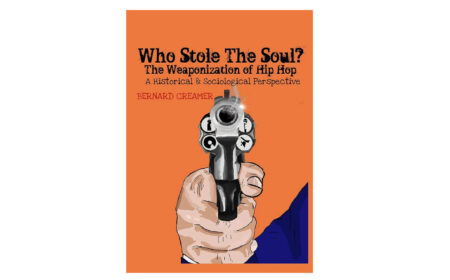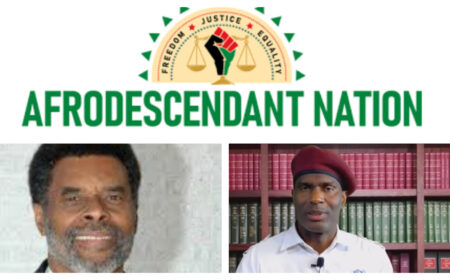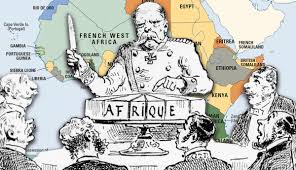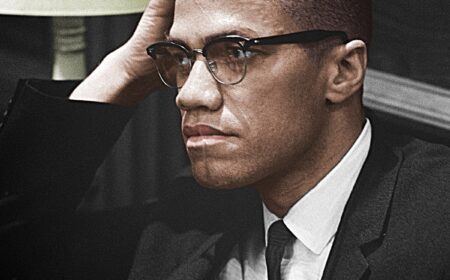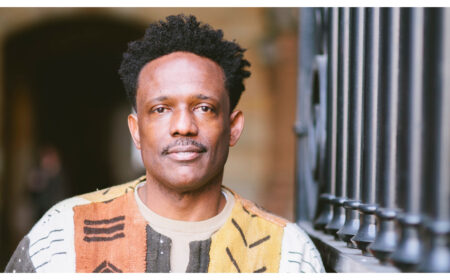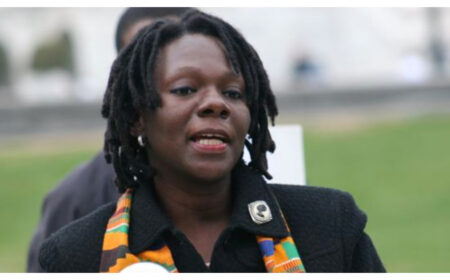Was the white-nationalist march better understood as a departure from America’s traditional values, or viewed in the context of its history?
Making Sense of the Violence in Charlottesville
Was the white-nationalist march better understood as a departure from America’s traditional values, or viewed in the context of its history?
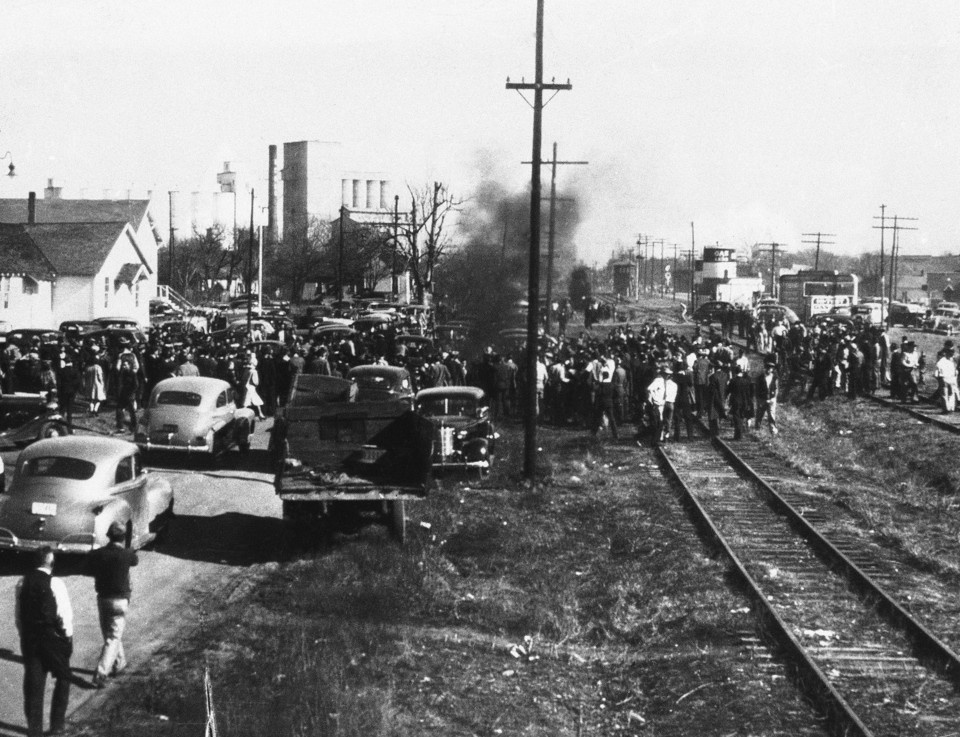
Broad swaths of the American public repudiated the white nationalists who marched in Charlottesville and President Trump’s response to them. But even in their condemnations, many officials asserted that the hate-filled demonstration and racist violence was un-American. “This bigotry is counter to all this country stands for,” tweeted Speaker of the House Paul Ryan. “The hate being spewed in Virginia is … deeply disturbing and un-American,” wrote Colorado Senator Cory Gardner. The hashtag #ThisIsNotUs trended on Twitter.
But America is a country in which racially motivated white-on-black violent crime forms a clear, unbroken pattern across every generation. Slaves arrived in America through violent crime, and whites have used violence ever since to maintain the racial hierarchy of white supremacy. And yet many Americans of good will honestly, if erroneously, believe that what happened in Charlottesville is “not us.” How can this be? Answering this question demands a look back at some of the most significant patterns of white-on-black violence in American history to identify the precise ways in which that violence was justified, forgotten, or defined as something other than the racist terror that it was.
American chattel slavery—in which blacks were bought, sold, worked, and bred for profit—was created and maintained through violence that was at once brutal and routine. Presenting himself as a benevolent master, James H. Hammond, a U.S. senator and operator of two plantations, laid out a schedule of offenses for his overseers, recommending that punishments “not exceed a hundred lashes in one day.” Slave-owners concocted racist myths to justify their brutality. Blacks have higher tolerance for pain than whites (so beatings that might seem harsh really weren’t); blacks don’t care about their children (so it wasn’t really all that cruel to steal babies from their mothers and fathers and sell them); blacks are lazy and indolent (so they must be beaten).
As one overseer explained to Frederick Law Olmstead when he travelled through the South as a correspondent for The New York Times, it was not at all excessive to give an enslaved teenage girl dozens of lashes on her bare skin for allegedly skipping out on her work. “If I hadn’t punished her so hard,” the overseer rationalized, “she would have done the same thing again to-morrow, and half the people on the plantation would have followed her example. Oh, you’ve no idea how lazy these niggers are … They’d never do any work at all if they were not afraid of being whipped.” Such justifications had the force of law; the Mississippi Supreme Court reversed a slave-owner’s manslaughter conviction for beating his slave to death, holding that “the master may use just such force as may be requisite to reduce his slave to obedience, even to the death of the slave, if that become [sic] necessary … to maintain his lawful authority.” In justifying this violence, supporters of slavery recast it as a kind of self-defense, and violence committed in self-defense—unlike violence committed out of anger or hatred—says nothing about the character of the perpetrators.
The demise of slavery did not lead to a decline in white-on-black violence—it merely changed forms. Most notoriously, whites lynched blacks; looking just at white-on-black lynchings for the purpose of racial control, the Alabama-based Equal Justice Initiative documented 4,075 lynchings between 1877, when Reconstruction ended, and 1950. Lynchings were even more savage and sadistic than most people imagine. In 1899, a white mob lynched Sam Hose, torturing him for half an hour before finally killing him. Members of the lynch mob cut off Hose’s ears and fingers one by one before castrating him. Then three men doused him in kerosene and burned him alive. In a 1934 lynching in Birmingham, Alabama, the victim, Claude Neal, was forced to castrate himself and eat his own penis and testicles. The white mob repeatedly stabbed him and burned him with red-hot irons. They hanged him by the neck over a tree limb until he almost choked to death, then let him down at the last minute; this was repeated several times before Neal died. Such depravity required justification. This time, accusations of black criminality would do the trick. In most lynchings, the victim was accused of rape, murder, or both. Hose was accused of killing his employer, Alfred Cranford, and raping Cranford’s wife, Mattie. Neal was alleged to have raped and murdered nineteen-year-old Lola Cannady. (Whether these accusations are true is beside the point—these men were entitled to due process—but there is good reason to believe, in both cases, that the rape charge was fabricated, perhaps in an attempt to incite the community’s anger.) Here, again, because defenders of lynching portrayed their violence as justified, even as we recognize today that lynching is a thing white people did, we can believe that it implies nothing about what it meant to be white.
Accusations of black-on-white rape were particularly effective in justifying lynching outside the South; Frederick Douglass described such accusations as “an appeal that not only stops the ears and darkens the minds of Southern men, but it palliates the crime of lawless violence in the eyes of Northern men.” The motifs of black men’s savage, uncontrollable lust and of white women’s chastity and virtue combined in a perfect storm of white fear to justify the practice of lynching generally, even when a particular lynching was not alleged to be in response to rape. Even opponents of lynching seemed to agree that the supposed epidemic of black-on-white rape demanded a violent solution. In the wake of the Hose lynching, Georgia governor William J. Northern, a supporter of anti-lynching legislation, argued in favor of arming white women, declaring that “an occasional negro lying dead in the back yard, shot by a brave woman in defense of her honor,” was a small price to pay for the safety and purity of Southern wives and daughters.
Attempts to justify racial terror have been accompanied by a national commitment to erasing it from our memory. Consider the little-known history of racial cleansing in America. Across the South and Midwest, Pulitzer Prize-winning journalist Elliot Jaspin has identified hundreds of counties that experienced sharp and abrupt drop-offs of their black populations. Though the historical record, as with lynching, is intentionally spotty, in many cases there is clear evidence that whites systematically and violently drove out entire black populations, dispossessing black families of their property and rendering them refugees. Patrick Phillips recounts one such expulsion in his 2016 book Blood at the Root. In 1912, the white residents of Forsyth County, Georgia, drove out all black residents of the county, who abandoned their land and their belongings as they fled bands of “night riders” carrying torches and shooting into black families’ homes. Some black residents had enough warning that they were able to sell their land, if at a fraction of its value. But many were forced to flee in the middle of the night.
The same whites who had driven them out of the county moved quickly to take over their abandoned homes and farms, paying property taxes on land they did not own to a county clerk who was happy to ignore that there was no record of the land being sold. Whites in Forsyth enforced the racial ban violently for decades; since black refugees could not safely return to retrieve their personal property or to sell their land, the new white “owners” could assert adverse possession after the statutory period of seven years, registering deeds at the county courthouse even though the Georgia statute technically required adverse possession to be “peaceable.” The “expulsion of Forsyth’s black population had made news all over the country,” Phillips points out, “but the thefts that followed were given a legal stamp of approval by the state, and they went unnoticed by anyone but the expelled black property owners themselves.”
Here was a highly publicized pattern of white terrorism for the express purpose of cleansing an entire county of its black population, yet less than a decade later, Phillips writes, the white leaders of Forsyth County were boasting—with a straight face—that “while other north Georgia communities [with mixed populations] continued to suffer episodes of ‘race trouble,’ there were no such embarrassments in Forsyth.” This was possible in part because they had erased evidence of just how Forsyth came to be an all-white county; officially, the transfer of property from the expelled blacks to their white neighbors was on the up and up, formalized through an accepted legal process. They had erased the racialized crime of violence-backed theft from the record books and replaced it with legal ownership.
This literal erasure enabled the ensuing rhetorical erasure of Forsyth’s history. In 1987, civil rights activists staged a protest in Forsyth County, which remained all-white 75 years after its racial cleansing. The white residents of the county seemed genuinely puzzled as to why activists were harassing them. One such resident, Bill Bolton, complained in a letter to the governor of Georgia, “we have not bothered the rest of the world, so why does the rest of the world want to bother us now?” Bolton’s implied narrative of Forsyth County’s history begins after the expulsion of its black residents. Starting with Forsyth’s whiteness as a given, he asserts a right to be left alone, a right against forcible integration by outsiders wanting to stir up trouble. Whether deliberate or not, this neatly covers up the fact that Forsyth’s all-whiteness is not, of course, its natural state—its all-whiteness is artificial, created and maintained through terrorism, and the outside agitators insisting on integration have the more historically accurate claim in that Forsyth was, previously, mixed.
White terrorists cleansed their communities of blacks in Forsyth County in 1912, and in Marshall County, Kentucky in 1908, and in Vermillion County, Indiana in 1923, and in Sharp County, Arkansas on Christmas Eve, 1906, to name just a few. If we recognized these crimes for what they were, it would be difficult to ignore that a pattern of racial terrorism had occurred across decades, and that later incidents of racial violence were part of that pattern. But a crime no one remembers cannot lead us to associate its perpetrators with criminality, so our concept of whiteness remains untouched by any association with violence.
We have erased the history of lynching in much the same way. The overwhelming majority of lynching sites remain unmarked and un-memorialized. The failure to mark these sites allows Americans (especially whites) to forget the atrocities. When law professor Sherrilyn Ifill (now president of the NAACP Legal Defense and Education Fund) interviewed white residents of Maryland’s Eastern Shore for her book On the Courthouse Lawn, she found that they knew very little about the lynchings that had taken place there as late as 1933. On the other hand, black residents had a vivid collective memory of such events, passed down orally, and could often point to a particular family member who had been present. This erasure of history from public spaces contributes to a kind of gaslighting dynamic in discussions of race in America: whites are able to minimize blacks’ claims of historical and ongoing oppression because they have successfully forgotten much of the history that blacks still remember.
Justifying and erasing hundreds of years of white-on-black violence has left many Americans ill-equipped to make sense of the racist violence that we live with today. As a result, whites often lack the vocabulary to contextualize even the most obviously racist events. After Dylann Roof murdered nine black Bible study participants at Emanuel AME Church in Charleston, South Carolina in 2015, media outlets tended to use vague language like “evil” or “monster” to describe Roof. That kind of equivocal terminology implied that Roof had an inherent, inevitable propensity for violence, a propensity that sprang up organically rather than being nurtured by extremist influences, and that his motivation was inscrutable because evil is incomprehensible and mysterious. Many politicians sounded like then South Carolina governor Nikki Haley, who wrote, “We’ll never understand what motivates anyone to enter one of our places of worship and take the life of another.”
But Roof’s motive could not have been clearer. He wrote a manifesto about the threat black criminality poses to Western civilization. He confessed to police that he planned and carried out the shooting with the intention of starting a “race war.” Roof was desperate to make sure everyone understood that he had acted to promote white supremacy, but many Americans stubbornly refused to take him at his own word, insisting that it would be premature to interpret the shooting as racial terrorism. By failing to connect Roof’s racism with his obvious criminality, many allowed themselves to think of the Charleston tragedy as an isolated and senseless act, instead of seeing it as a seamless continuation of the racial terrorism that is America’s heritage.
In every generation, Americans have consistently spoken about racist violence committed by white people as justified, erased it from memory, or simply called it something else. So when self-identified white nationalists seeking to turn America into a whites-only homeland held a torchlight protest, many observers failed to make the clear connection to bands of night riders, armed and carrying torches, driving blacks out of their homes to cleanse the region of anyone not white. When gun-toting white men at a neo-Nazi rally brutally beat a black man with metal poles, Americans failed to see the connection to the violence of slavery, to whites whipping blacks into submission. When a white supremacist drove a car into a crowd of anti-racist counter-protesters, killing one person and injuring nineteen others, Americans condemned it thoroughly, but failed to recognize it as a lynching, as the kind of terrorist act whites in this country have long used to maintain racial control.
This state of affairs is not inevitable; America’s relationship with its history is a collective choice. Other countries have made other choices in the wake of systematic racist violence. After the Holocaust, Germany made financial reparations to the victims, and began a decades-long project of building monuments and museums to commemorate the horrors of Nazism and the bravery of those who resisted it. South Africa’s Truth and Reconciliation Commission sought to develop a shared national narrative of human rights abuses under apartheid by telling the stories of both victims and perpetrators.
Neither response is perfect in theory or in execution; defensiveness and denial remain. But the effort is underway to face up to the full horror of racist terror, not justify it; to name racially motivated violence as such, not hide it; to mark down in disgrace the names of the perpetrators, not celebrate them; and to memorialize the victims, not erase their suffering. America, tragically, is over a century behind on its obligation to undertake the same reckoning. The horrific events of August provide an opportunity to get started.
READ MORE https://www.theatlantic.com/politics/archive/2017/09/a-history-of-violence/538659/?utm_source=fbb
